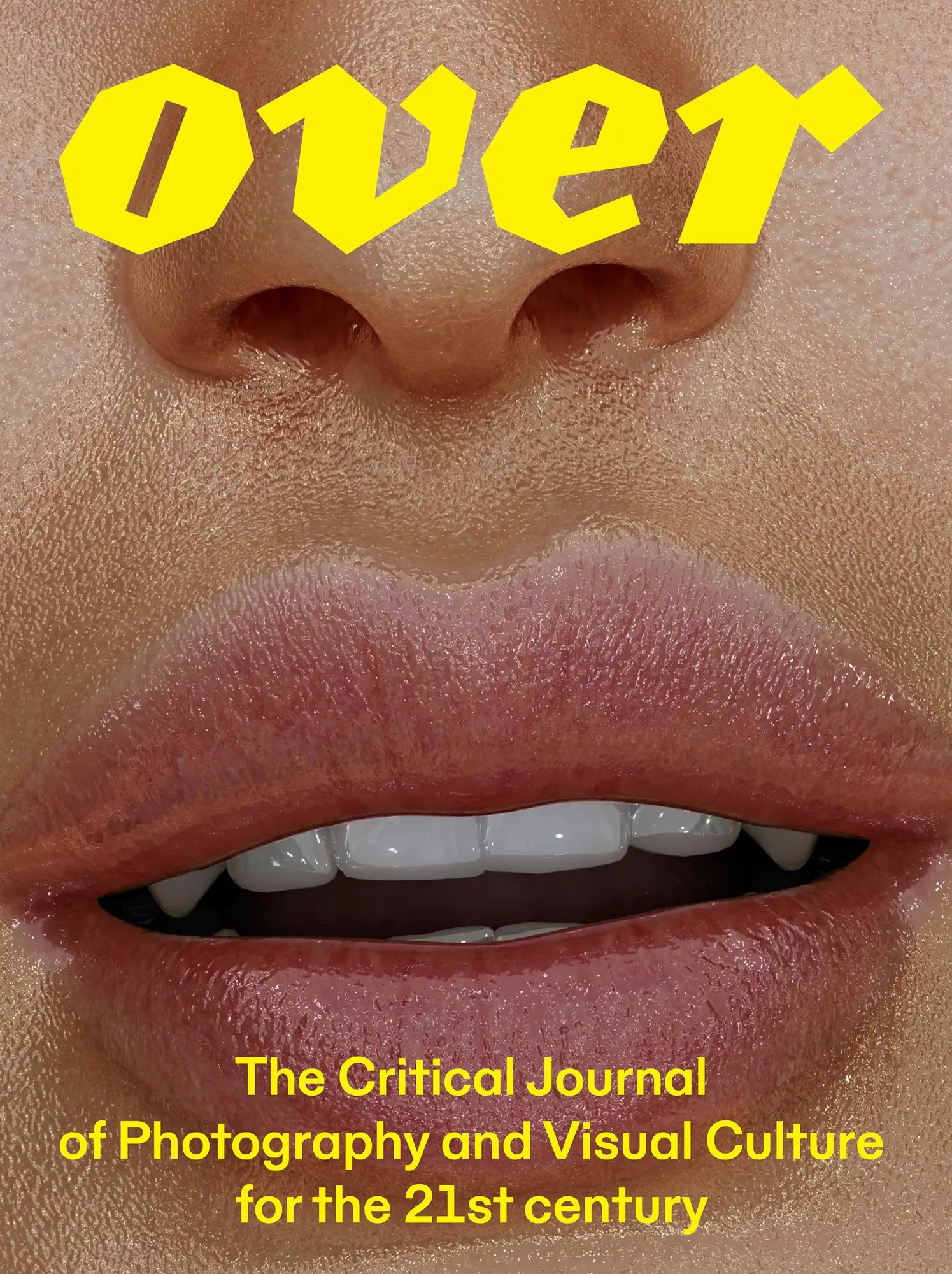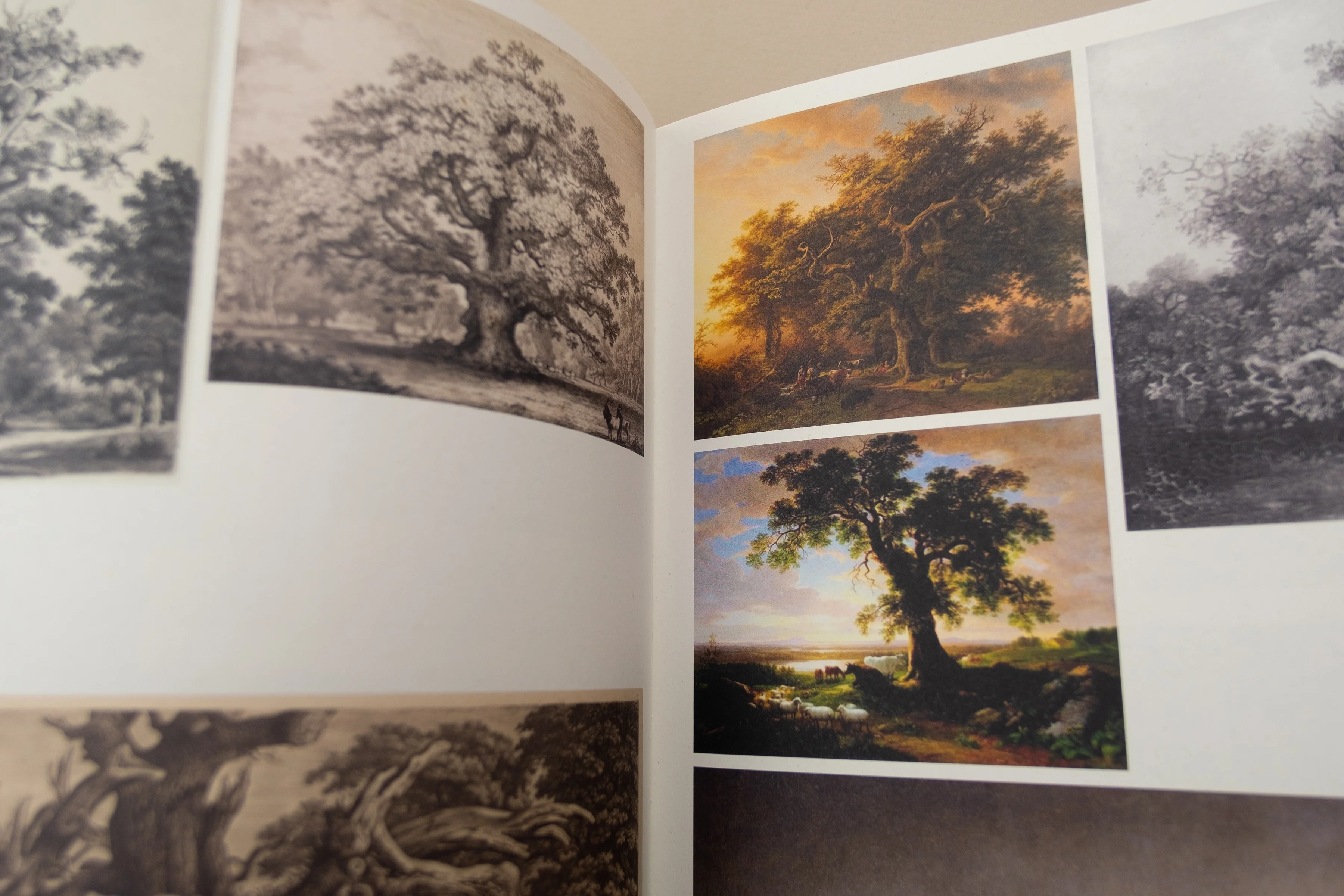Noémie Goudal, Tilt.
In a way, it is probably better to first encounter Noémie Goudal’s artworks without knowing too much about them, since the undeniable pleasure of looking at her photographs and projections comes from trying to figure out what it is we are actually looking at. Yet, seeing as it is the artist’s strategy to reveal her methods through circulating making-of documentation, pointing to her modus operandi as an integral part of the work, not meant to be dissimulated, I don’t feel too bad about spoiling the experience a little. ‘Tilt’, the first exhibition of Goudal’s work in Ireland, was promoted with one such making-of image.
As the visitor enters The Dock’s building and goes up the stairs to the three exhibition galleries, the first work encountered on the landing is Untitled (Mountain) I (2021), a very apt entry point to the themes and methods on display through ‘Tilt’1. It is a photograph that initially looks evident enough – a Photoshopped copy-paste that makes a mountain look like a 3D concrete model – but with some details not quite adding up. This ambivalence is at the core of Goudal’s practice.
Her images are generally devoid of human presence – when buildings are depicted, they always look long abandoned – and illusionary tricks are played out on the viewer while making no mystery of using them. Perhaps the first trick of all is that, contrary to our first impression, her photographs are absolutely straightforward, deprived any sort of digital manipulation. A making-of photograph of the Untitled (Mountain) series shows the artist’s collaborators setting up, in a mountainous pasture, a cardboard model that will form the bottom part of the image. In the tightly framed resulting image, it appears as the concrete cast of the mountain rising above.

The main gallery offers more occasions to be deceived and undeceived in turn. Relinquishing wall hangings for all but one of the photographs presented, the space is geometrically organised around eight white, column-like translucent scrolls hanging from the ceiling. They serve as backdrop for a series of photographs ranging from 2013 to 2023. The bright, slightly overcast day I visited the gallery offered a propitious extension to the luminous atmosphere of Goudal’s black and white images. In the photographs, which adopt the objective point of view of its subjects and even lighting, we find in the Typologies of Bernd and Hilla Becher – as well as the grid arrangement of the series composing Démantètelement III (2019). Yet while the Bechers’ style aimed to document early industrial structures as precisely and neutrally as possible, the objects Goudal photographs do not actually exist; the conspicuous documentary neutrality is another trompe l’oeil.
For the Observatoire (2013-14) series, concrete structures appear to float in nondescript shallow waters. Suspicious signs include marks of folding, pointing to the two-dimensionality of these structures. Like for the Démantètelement series (2018), prints are held up by collaborators in an outdoor setting to appear as an integrated part of the final image. The work titled Soulévement (2018) is more puzzling: the series shows rocks on a beach, whose parts don’t quite come together, slivers of sky and sea showing here and there, looking very much like a badly made photo-montage. A making-of-as-reverse-shot, however, shows us the back of a contraption made up of adjustable arms each holding a mirror, and a rocky outcrop in the background.
The gesture is reminiscent of Robert Smithson’s Yucatán Mirror Displacements (1969), inserting unseen elements in the photographed landscape through the placement of mirrors, but it eschews the situated gesture of Smithson’s practice for a more general reflection on what distinguishes a natural from a constructed occurrence. Positioned at the foot of the scrolls, the sculptures are playful DIY assemblages animating such ideas as The Tectonic of Wegener and The Hollow Earth of Edmond Halley. Just like the historical Earth theories manifested by the Terrella series (2023), nothing is immutable – or so the works suggest. Not even the laws of the universe.

This world in constant movement is perhaps best apprehended through the White Pulse series (2023). Unlike the earlier works, this series is made in the studio and introduces a new setup to stage depth. A succession of suspended frames, depicting multiples of the same printed photograph of a mountain, are aligned with each other and fastened with metal pegs. They are partly rolled down so as to reveal the prints behind, only then to be photographed with the frame apparatus and pegs showing. The overall effect is that the landscape is in the process of folding or unfolding itself, not unlike the pressure of telluric forces in the formation of mountains.
Goudal’s work has gathered increasing critical and public attention over the years, and this has enabled her to scale up and diversify her scenographies. Last year, she was shortlisted for the Marcel Duchamp Prize, and the work she created on this occasion, Supra Strata (2024), is certainly the centerpiece of ‘Tilt’. This single-shot, 17-minute-long film projection documenting the disintegration of a landscape introduces a figurative and literal darker hue to the exhibition. Since the setup was used as promotional material, the viewer figures out certain aspects of the work easily.

It expands upon the White Pulse series’ use of successive frames but on a larger scale. What begins as the image of a dark tropical forest – albeit with the telltale signs that this is not – starts dissolving and breaking up, revealing further layers of images: more vegetation, a cave with an underground lake, a rocky background. What is particularly unsettling here is the way the layers melt and fall, not like wet paper at all. It turns out that the printed layers are made of plastic, and they are sprayed with acid.
Here parallels with the Vancouver School of photography come to mind, more specifically the work of Jeff Wall or Stan Douglas: highly staged photographs aimed at capturing a moment of truth at a concentration level of intensity and complexity that the real won’t deliver. Perhaps this is the paradox of Goudal’s photographic and moving images: although devoid of human presence, nothing is ‘natural’, all is ‘produced’. On the one hand, this underscores how constructed our notions of what is natural are. But it also indicates how human activities are deeply affecting all processes, whether geological or hydrological, so that nothing remains untouched.
_ _ _ _ _ _
‘Tilt’ at The Dock, Carrick-on-Shannon, features Noémie Goudal’s single-channel film ‘Supra Strata’ (2024), created for the Prix Marcel Duchamp, alongside her ‘Terrella’ sculptures (2023) and ‘Rocks’ installation (2024).
Tilt, Noémie Goudal
10 May – 2 August 2025
Curated by Mary Conlon and Linda Shevlin
















%2C%202013_xs.webp)
%2C%202013_xs.webp)







